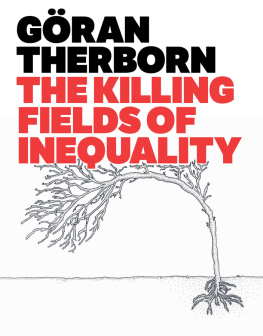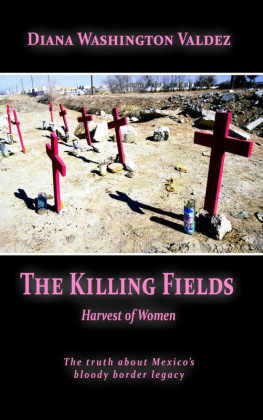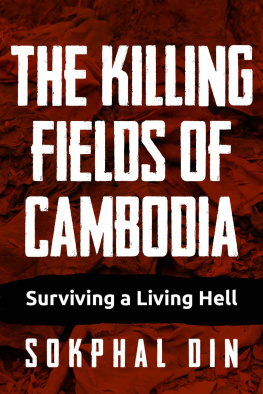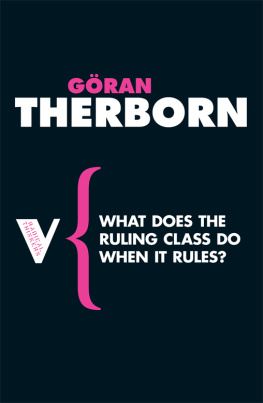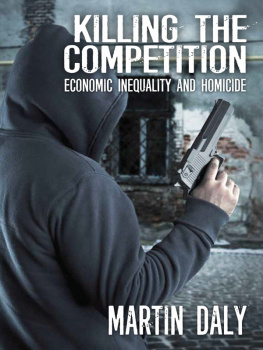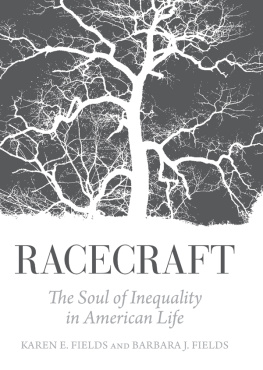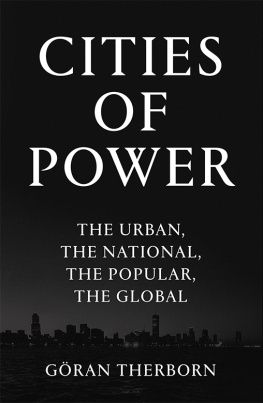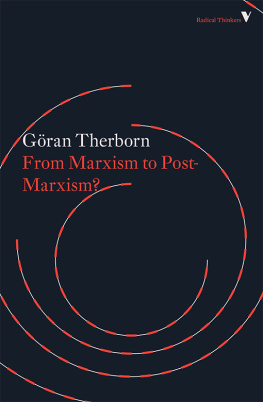Therborn G - The killing fields of inequality
Here you can read online Therborn G - The killing fields of inequality full text of the book (entire story) in english for free. Download pdf and epub, get meaning, cover and reviews about this ebook. City: Cambridge, year: 2013, publisher: Wiley;Polity, genre: Politics. Description of the work, (preface) as well as reviews are available. Best literature library LitArk.com created for fans of good reading and offers a wide selection of genres:
Romance novel
Science fiction
Adventure
Detective
Science
History
Home and family
Prose
Art
Politics
Computer
Non-fiction
Religion
Business
Children
Humor
Choose a favorite category and find really read worthwhile books. Enjoy immersion in the world of imagination, feel the emotions of the characters or learn something new for yourself, make an fascinating discovery.
- Book:The killing fields of inequality
- Author:
- Publisher:Wiley;Polity
- Genre:
- Year:2013
- City:Cambridge
- Rating:4 / 5
- Favourites:Add to favourites
- Your mark:
- 80
- 1
- 2
- 3
- 4
- 5
The killing fields of inequality: summary, description and annotation
We offer to read an annotation, description, summary or preface (depends on what the author of the book "The killing fields of inequality" wrote himself). If you haven't found the necessary information about the book — write in the comments, we will try to find it.
The killing fields of inequality — read online for free the complete book (whole text) full work
Below is the text of the book, divided by pages. System saving the place of the last page read, allows you to conveniently read the book "The killing fields of inequality" online for free, without having to search again every time where you left off. Put a bookmark, and you can go to the page where you finished reading at any time.
Font size:
Interval:
Bookmark:

Table of Contents

Copyright Gran Therborn 2013
The right of Gran Therborn to be identified as Author of this Work has been asserted in accordance with the UK Copyright, Designs and Patents Act 1988.
First published in 2013 by Polity Press
Polity Press
65 Bridge Street
Cambridge CB2 1UR, UK
Polity Press
350 Main Street
Malden, MA 02148, USA
All rights reserved. Except for the quotation of short passages for the purpose of criticism and review, no part of this publication may be reproduced, stored in a retrieval system, or transmitted, in any form or by any means, electronic, mechanical, photocopying, recording or otherwise, without the prior permission of the publisher.
ISBN-13: 978-0-7456-6258-9
ISBN-13: 978-0-7456-6259-6 (pb)
ISBN-13: 978-0-7456-7991-4 (epub)
ISBN-13: 978-0-7456-7990-7 (mobi)
A catalogue record for this book is available from the British Library.
The publisher has used its best endeavours to ensure that the URLs for external websites referred to in this book are correct and active at the time of going to press. However, the publisher has no responsibility for the websites and can make no guarantee that a site will remain live or that the content is or will remain appropriate.
Every effort has been made to trace all copyright holders, but if any have been inadvertently overlooked the publisher will be pleased to include any necessary credits in any subsequent reprint or edition.
For further information on Polity, visit our website: www.politybooks.com
Figures
Stylized income inequality curves of developed countries, mid-nineteenth to late twentieth centuries
Landmarks of existential (in)equality, 19002012
Global income inequality, 18202000
Tables
Murder regions of the world. Homicides per 100,000 population, circa 2010
Two societies of perfect equality of opportunity with different outcome structures
The roots, dynamics and interactions of the three kinds of inequality
Inequality mechanisms and their interactive dynamics
Equality mechanisms
The power of income redistribution
Top incomes in the world, 19132005
The loss of human well-being due to different kinds of inequality in 2011 in the regions of the world
Gender inequality in the world, 2011
Income inequality in countries of the world, 20052011
Inequality of income opportunity by the end of the twentieth century
Capital managed by the top 50 firms in the US securities industry, 19722004
Introduction
Inequality is a violation of human dignity; it is a denial of the possibility for everybody's human capabilities to develop. It takes many forms, and it has many effects: premature death, ill-health, humiliation, subjection, discrimination, exclusion from knowledge or from mainstream social life, poverty, powerlessness, stress, insecurity, anxiety, lack of self-confidence and of pride in oneself, and exclusion from opportunities and life-chances. Inequality, then, is not just about the size of wallets. It is a socio-cultural order, which (for most of us) reduces our capabilities to function as human beings, our health, our self-respect, our sense of self, as well as our resources to act and participate in this world.
Outside philosophy, where, thanks to the late John Rawls, there has since the early 1970s been a significant interest in it, there has been little scholarly attention to inequality as a general plague on human societies. After Ricardo in the early nineteenth century, there was a long precipitous decline of economic interest in distribution, from which there is significant recovery in recent times, but understandably mainly, if not exclusively, concerned with inequality of income and wealth. The works of Anthony Atkinson, Branko Milanovic, Thomas Piketty and others have vastly widened our horizon of empirical knowledge.
Classical sociology had no focus on inequality, and in the American decades of post-World War II sociology, it took at least until the mid-1960s ( Lenski 1966) before inequality became a mainstream concern. Even then, Gerhard Lenski's book on Power and Privilege is subtitled A Theory of Social Stratification. In the earlier handbook literature ( Lazarsfeld and Rosenberg 1955; Lipset and Smelser 1961) it is completely absent (true, the second deals with distribution of prestige). Only from Smelser (1988) on is inequality officiously awarded a legitimate place in sociological investigations. Among the fifty-odd Research Committees of the International Sociological Association, there is no one focused on inequality. The nearest Ersatz is RC 28 on Social Stratification, a strange concept, imported from geology into sociology by a great, conservative Russian sociologist who emigrated to the US, Pitirim Sorokin (1927). In Sorokin's tradition, the Committee has mainly been interested in inter-generational social mobility, more popularly known as inequality of opportunity, a field in which impressive technical skills have been developed and deployed.
More than a discipline, sociology is a vast field of many different pursuits, by different methods, so on most facets of inequality there is some sociological research. However, so far, there has been no attempt, in any social science discipline, to put a spotlight on the multidimensionality of inequality and its nefarious consequences. The general theoretical discussion has been carried from philosophy to the social sciences by the economist Amartya Sen, and the broadest empirical discussion has been opened by epidemiologists by Michael Marmot (2004) and Richard Wilkinson (1996, 2005; Wilkinson and Pickett 2009).
This abdication by sociology, the least bounded and the most generous of the social sciences, may now be ending. The International Sociological Association has decided to devote its next World Congress, in Yokohama in 2014, to inequality.
Citizens have been more impatient. In 2011 inequality was present, red-hot, in the streets: in the Mediterranean opposition to unequal austerity; in the Arab rebellions against unequal freedom and opportunity; in the Chilean student (and middle-class-supported) rejection of unequal higher education; in the Occupy movements of the US, the UK and other places, against the rule of the 1 per cent. Inequality even became a theme of the corporate Alpine leisure of the World Economic Forum at Davos.
This book's effort, which continues previous ones (e.g. Therborn 2006), has some distinctive features among the currently growing literature on inequality. It is resolutely multidimensional in its approach to inequality, focusing on health/mortality, on existential degrees of freedom, dignity and respect, as well as on resources of income, wealth, education and power. Secondly, it uses a historical global perspective, trying to grasp, comprehend and explain global as well as intra-national developments over modern time. Thirdly, it tries to spell out the various mechanisms through which inequalities are produced. Fourthly, it pulls out mechanisms of equalization, and attempts to grasp historical moments, processes and policies of equalization. Increasing inequality is not inevitable. Finally, it offers an agenda for overcoming, or at least reducing, inequalities.
In-equality, as I shall elaborate somewhat below, is a normative concept, denoting the absence, the lack, of something i.e., of equality. This normativity had better be recognized and reflected upon from the outset. But stated as a premise of concern, assessing its actual prevalence, identifying its causal mechanisms, and spelling out its social consequences are all procedures subject to possible scholarly falsification.
Next pageFont size:
Interval:
Bookmark:
Similar books «The killing fields of inequality»
Look at similar books to The killing fields of inequality. We have selected literature similar in name and meaning in the hope of providing readers with more options to find new, interesting, not yet read works.
Discussion, reviews of the book The killing fields of inequality and just readers' own opinions. Leave your comments, write what you think about the work, its meaning or the main characters. Specify what exactly you liked and what you didn't like, and why you think so.

